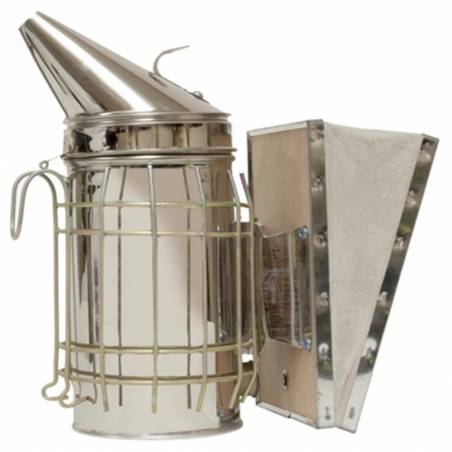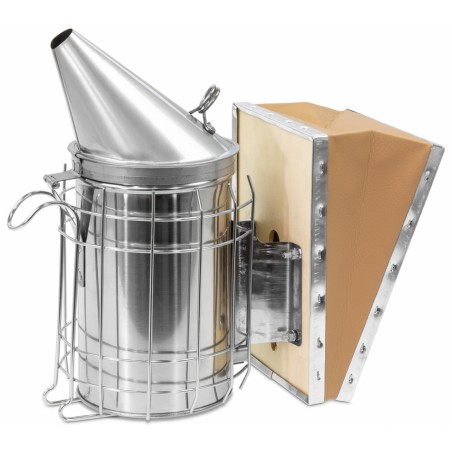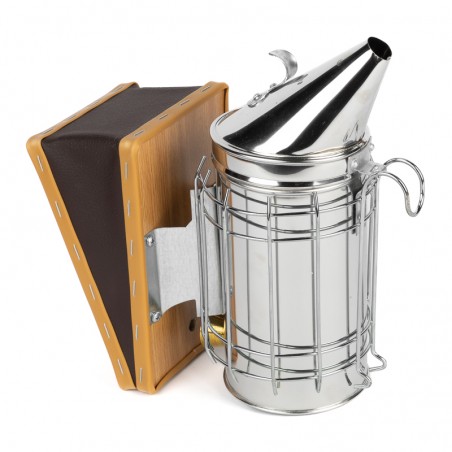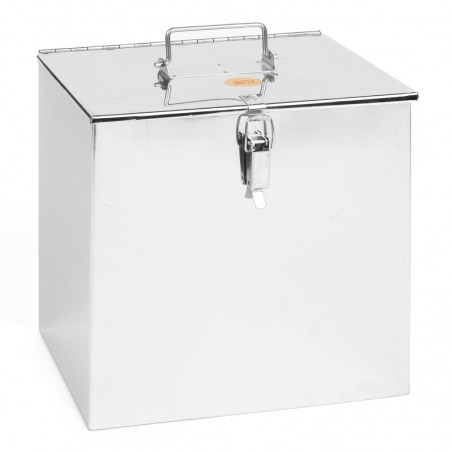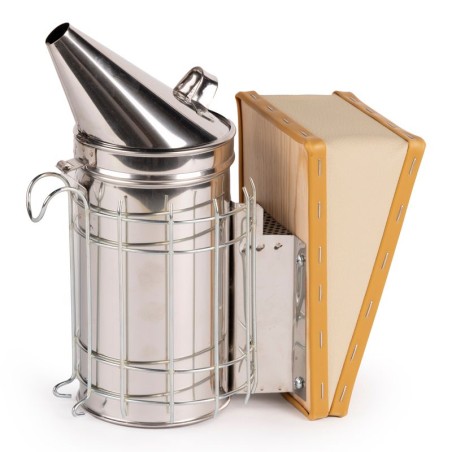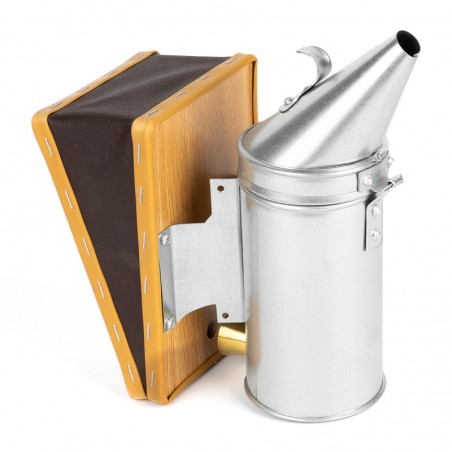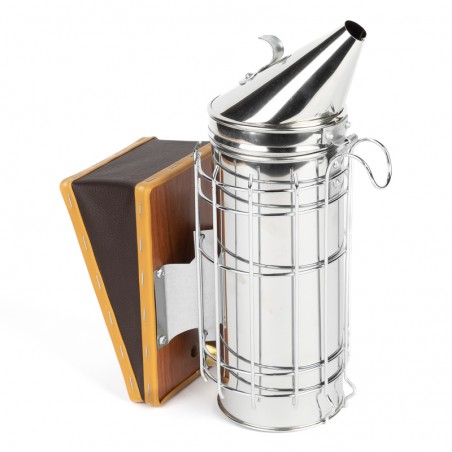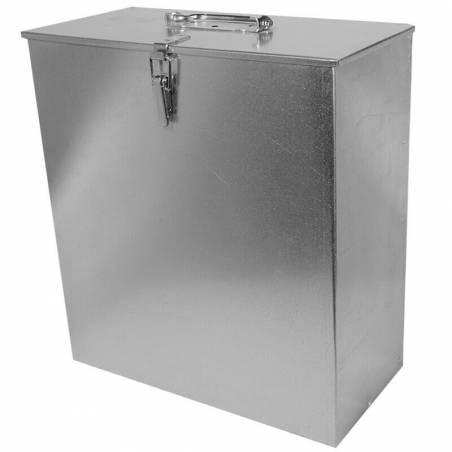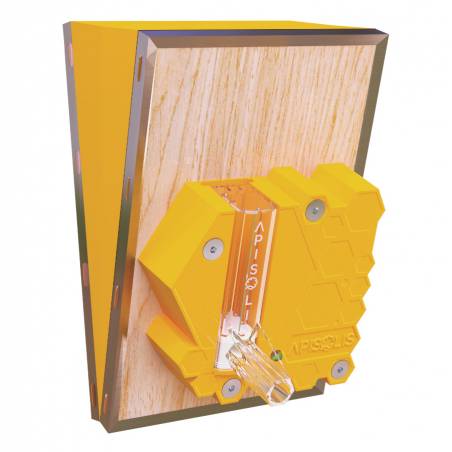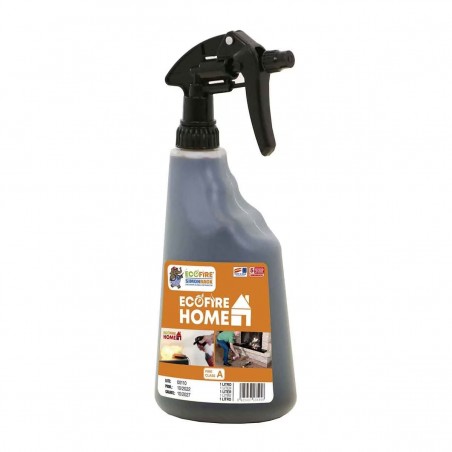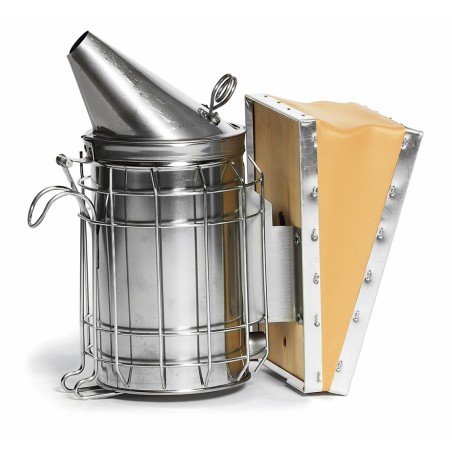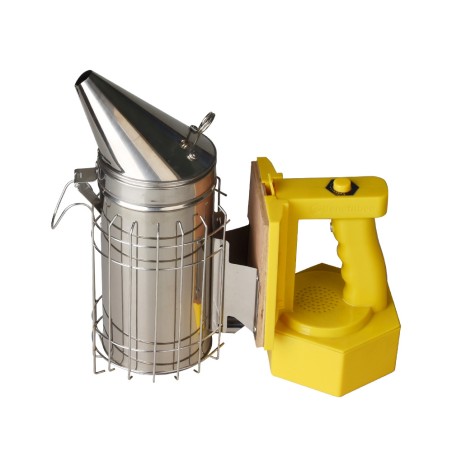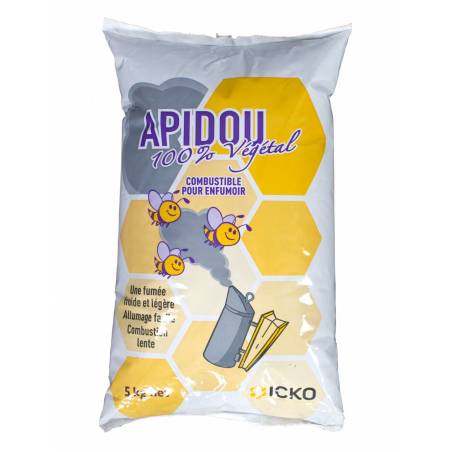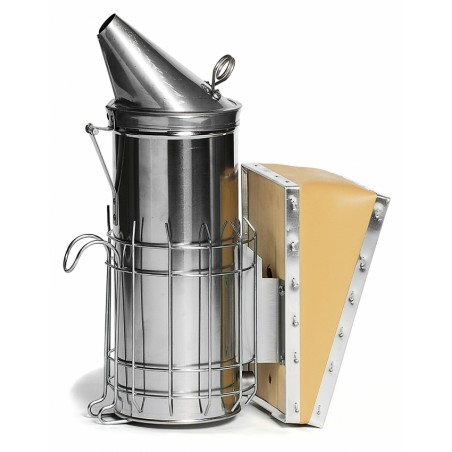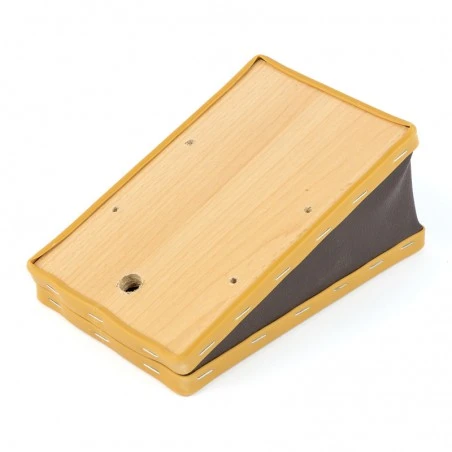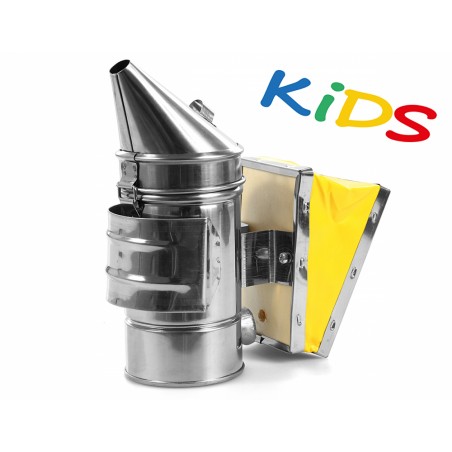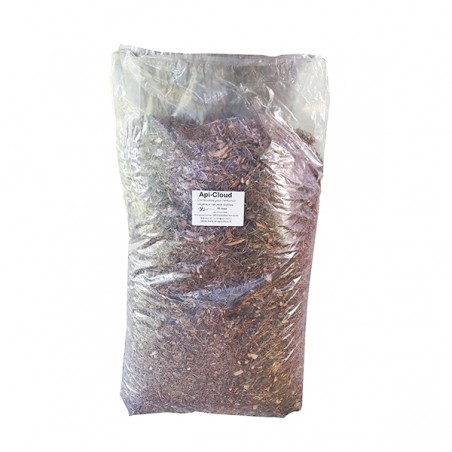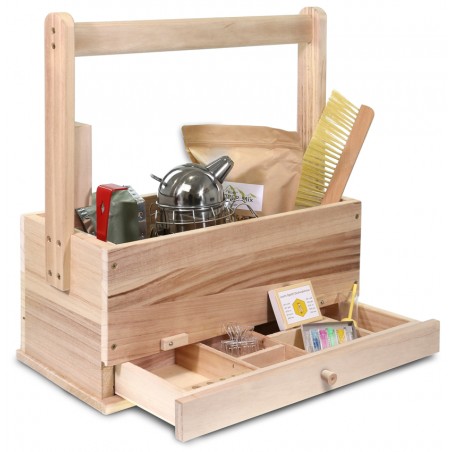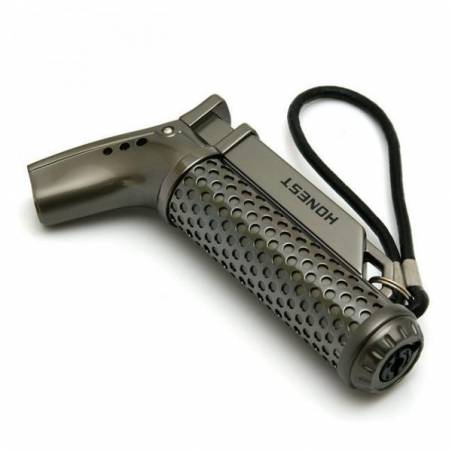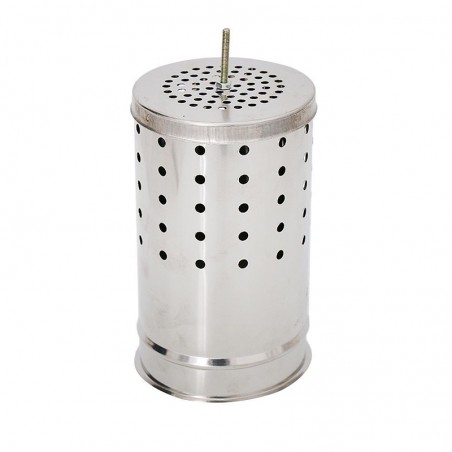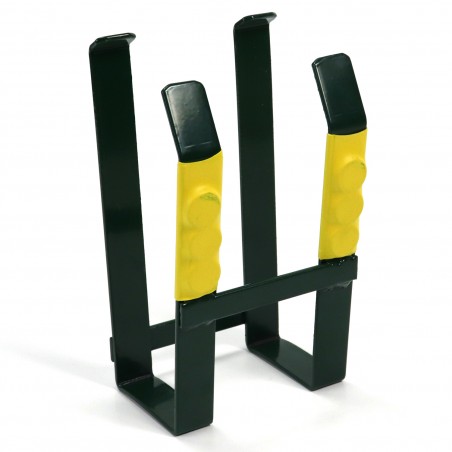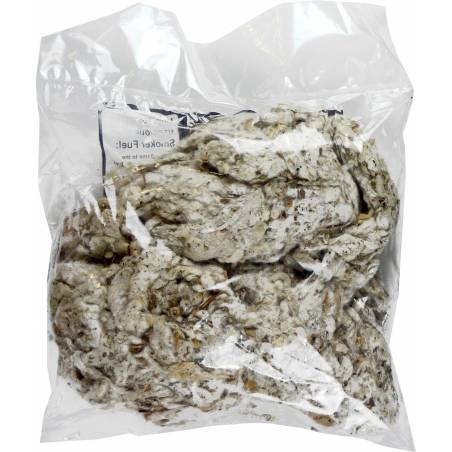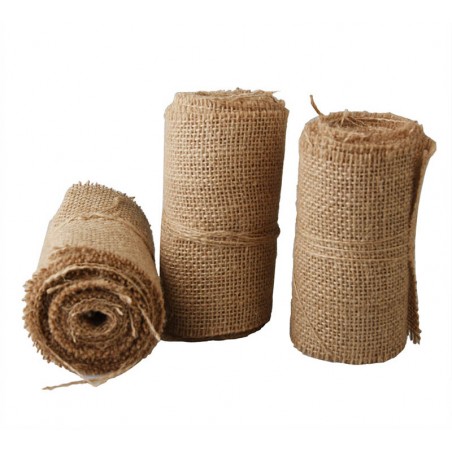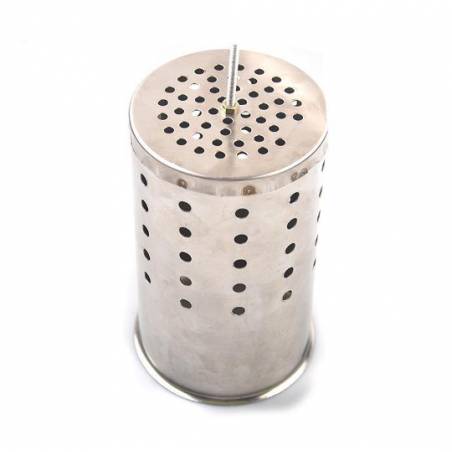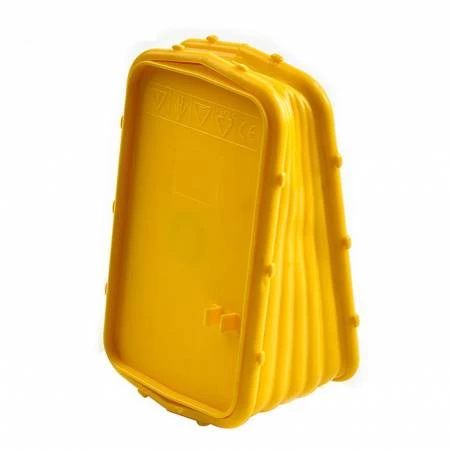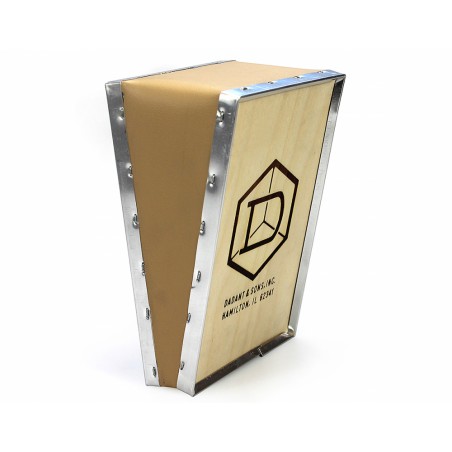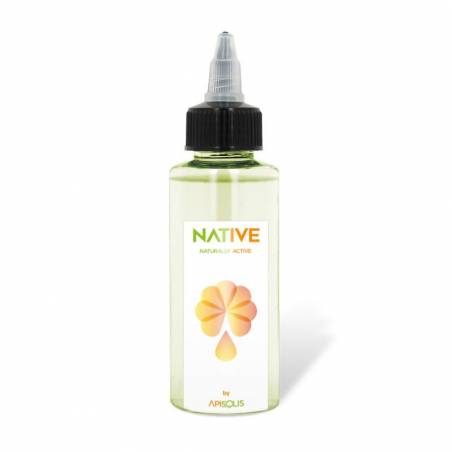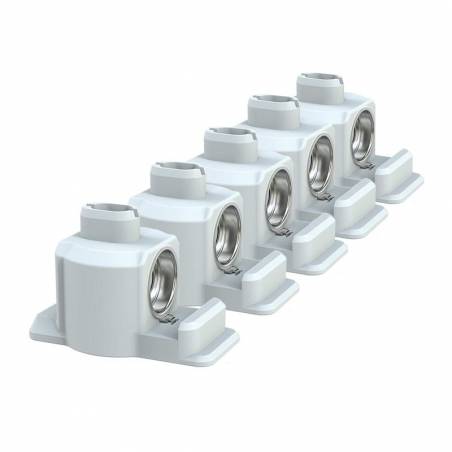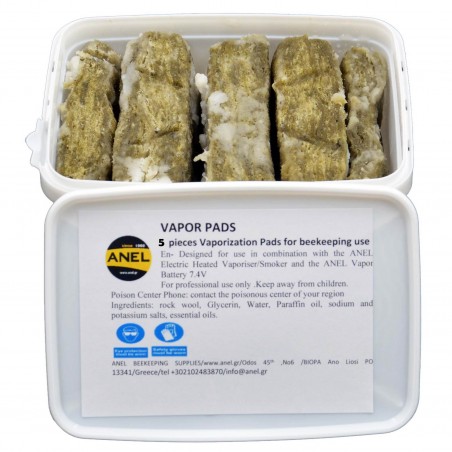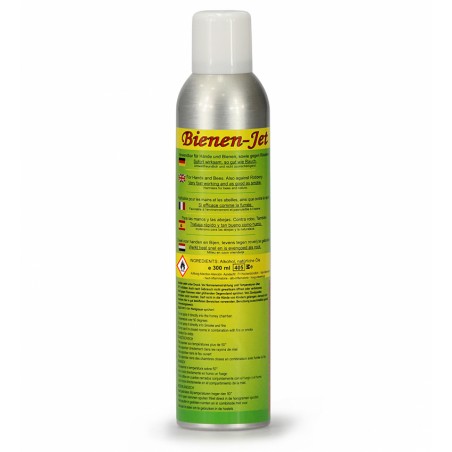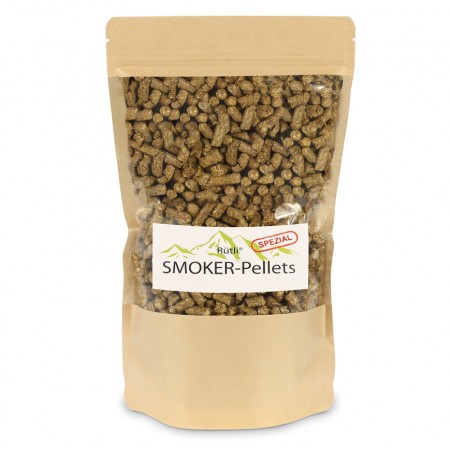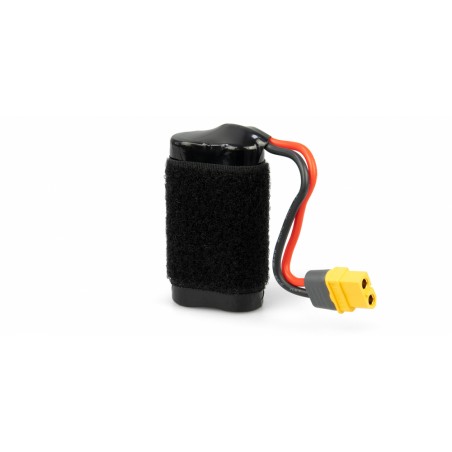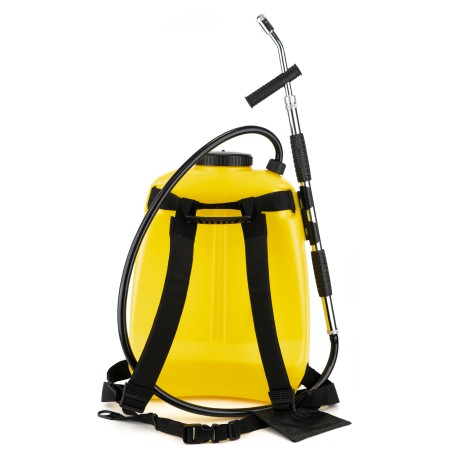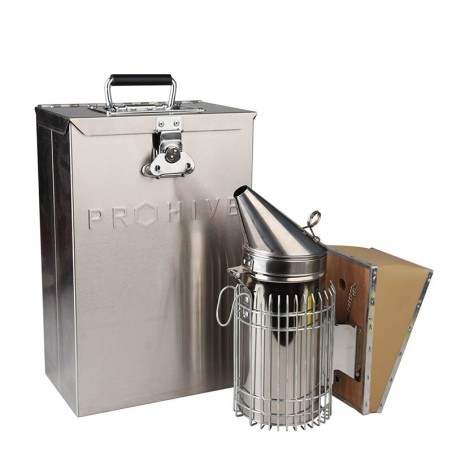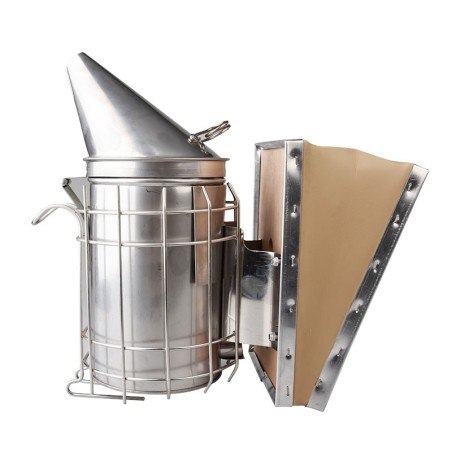Smokers
The smoker is an essential tool to calm bees and work safely in the hive. Discover all types of models and accessories for every beekeeper.
Keep Bees Calm with Our Reliable Smokers
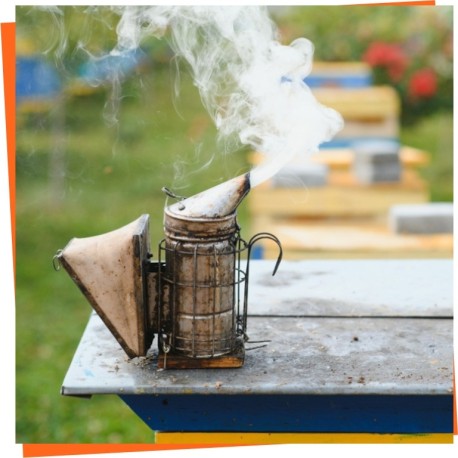
Smokers
Since Moses Quinby invented the modern smoker in 1875 in New York, this tool has become an essential ally for beekeepers. Using it correctly makes the difference between a smooth inspection and a defensive hive.
Why do beekeepers use smokers?
Smoke disrupts the bees’ chemical communication, especially by inhibiting the alarm pheromone. It also triggers a survival response: the bees gorge themselves with honey in case they need to flee the hive, which makes them more docile and easier to handle for a few minutes. But beware — too much smoke can irritate the colony or affect the taste of the honey. Mastering the art of smoking is all about balance.
Types of smokers you’ll find here:
• Traditional bellows smoker: the most commonly used. Sturdy, reliable, and compatible with various natural fuels. A timeless classic.
• Jumbo (high-capacity): designed for large apiaries or long work sessions. Fewer refills, more autonomy.
• With heat shield or spark guard: essential to avoid burns or prevent wildfires, especially in dry or hot environments.
• Electric smokeless models: use internal heating elements instead of open flame — ideal for urban or fire-prone areas.
• Electronic vaporizers like Apisolis®: no combustion, no real smoke. Perfect for those seeking a clean, respectful approach or working with sensitive bee breeds.
Fuel matters as much as the smoker itself
The goal is to produce a dense, white, and cool smoke. For that, we recommend fuels such as:
• Cotton fiber (great for quick ignition)
• Beekeeping pellets
• Natural corrugated cardboard
• Untreated wood shavings
• Jute, bark, dry herbs, or pine needles
Avoid synthetic materials, treated woods, printed papers, or anything that might release toxins or leave unwanted odors in the hive.
🛑 Do not use printed paper, synthetic fabrics, or glued/treated wood. And never approach your bees without first testing your smoker.
Safety first
• Use spark guards or enclosed models to prevent fire hazards.
• Always light your smoker away from dry vegetation.
• During transport, store it in a metal bucket or sealed container.
• Make sure it’s fully extinguished after use.
How to smoke your hive properly
• Apply 2–3 puffs at the hive entrance. Wait a few seconds.
• Open the lid and gently direct smoke between the frames.
• Keep smoke minimal but consistent, avoid overwhelming the bees.
• If they buzz and begin to feed on honey, you're on the right track.
• Always stay behind the hive, outside their flight path.
With practice, you’ll develop the perfect “touch.” Too much smoke can poison the colony or ruin your honey. Too little… and they’ll let you know.
Serious about hive management? Then you need a proper smoker (and know how to use it).
Here you’ll find not just top-quality smokers, but also the right fuels and accessories to keep your most important tool ready at all times. Because without smoke, there is no hive handling. And if it fails… your bees won’t go easy on you.

 Apipasta with vitamins 15kg
Apipasta with vitamins 15kg
 Beecomplet® Spring 14Kg
Beecomplet® Spring 14Kg
 Beekeeper suit with round veil
Beekeeper suit with round veil
 Oxalic acid 1kg
Oxalic acid 1kg
 Beeswax Foundation 5kg
Beeswax Foundation 5kg
 Fresh royal jelly 20g
Fresh royal jelly 20g
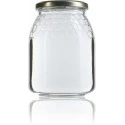 Classic honey jar 1kg comb-lines TO77 - Pack of 16 units
Classic honey jar 1kg comb-lines TO77 - Pack of 16 units
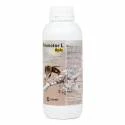 Promotor L 1 liter
Promotor L 1 liter
